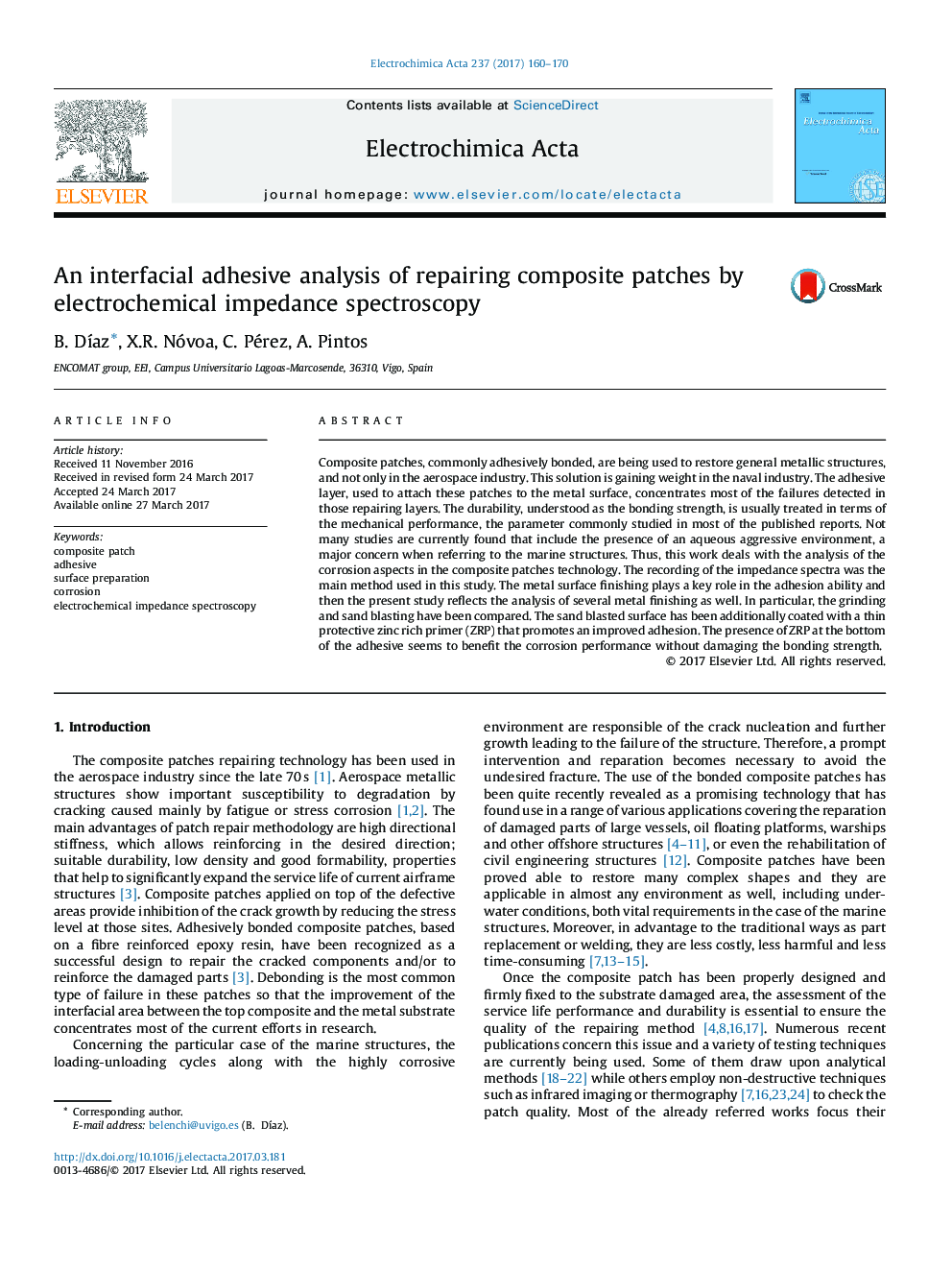| Article ID | Journal | Published Year | Pages | File Type |
|---|---|---|---|---|
| 4767140 | Electrochimica Acta | 2017 | 11 Pages |
Abstract
Composite patches, commonly adhesively bonded, are being used to restore general metallic structures, and not only in the aerospace industry. This solution is gaining weight in the naval industry. The adhesive layer, used to attach these patches to the metal surface, concentrates most of the failures detected in those repairing layers. The durability, understood as the bonding strength, is usually treated in terms of the mechanical performance, the parameter commonly studied in most of the published reports. Not many studies are currently found that include the presence of an aqueous aggressive environment, a major concern when referring to the marine structures. Thus, this work deals with the analysis of the corrosion aspects in the composite patches technology. The recording of the impedance spectra was the main method used in this study. The metal surface finishing plays a key role in the adhesion ability and then the present study reflects the analysis of several metal finishing as well. In particular, the grinding and sand blasting have been compared. The sand blasted surface has been additionally coated with a thin protective zinc rich primer (ZRP) that promotes an improved adhesion. The presence of ZRP at the bottom of the adhesive seems to benefit the corrosion performance without damaging the bonding strength.
Related Topics
Physical Sciences and Engineering
Chemical Engineering
Chemical Engineering (General)
Authors
B. DÃaz, X.R. Nóvoa, C. Pérez, A. Pintos,
